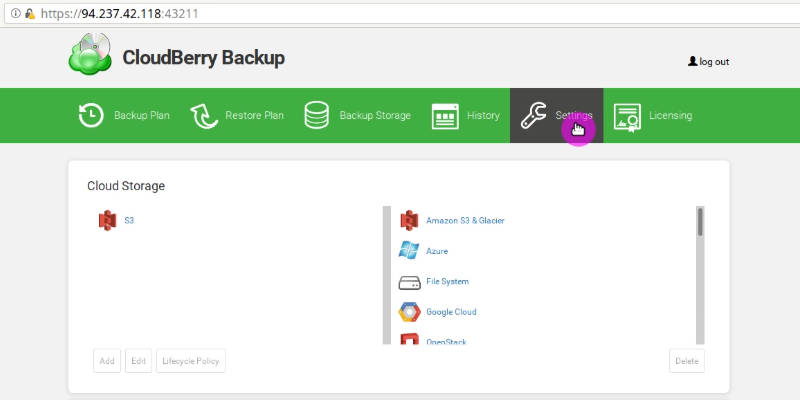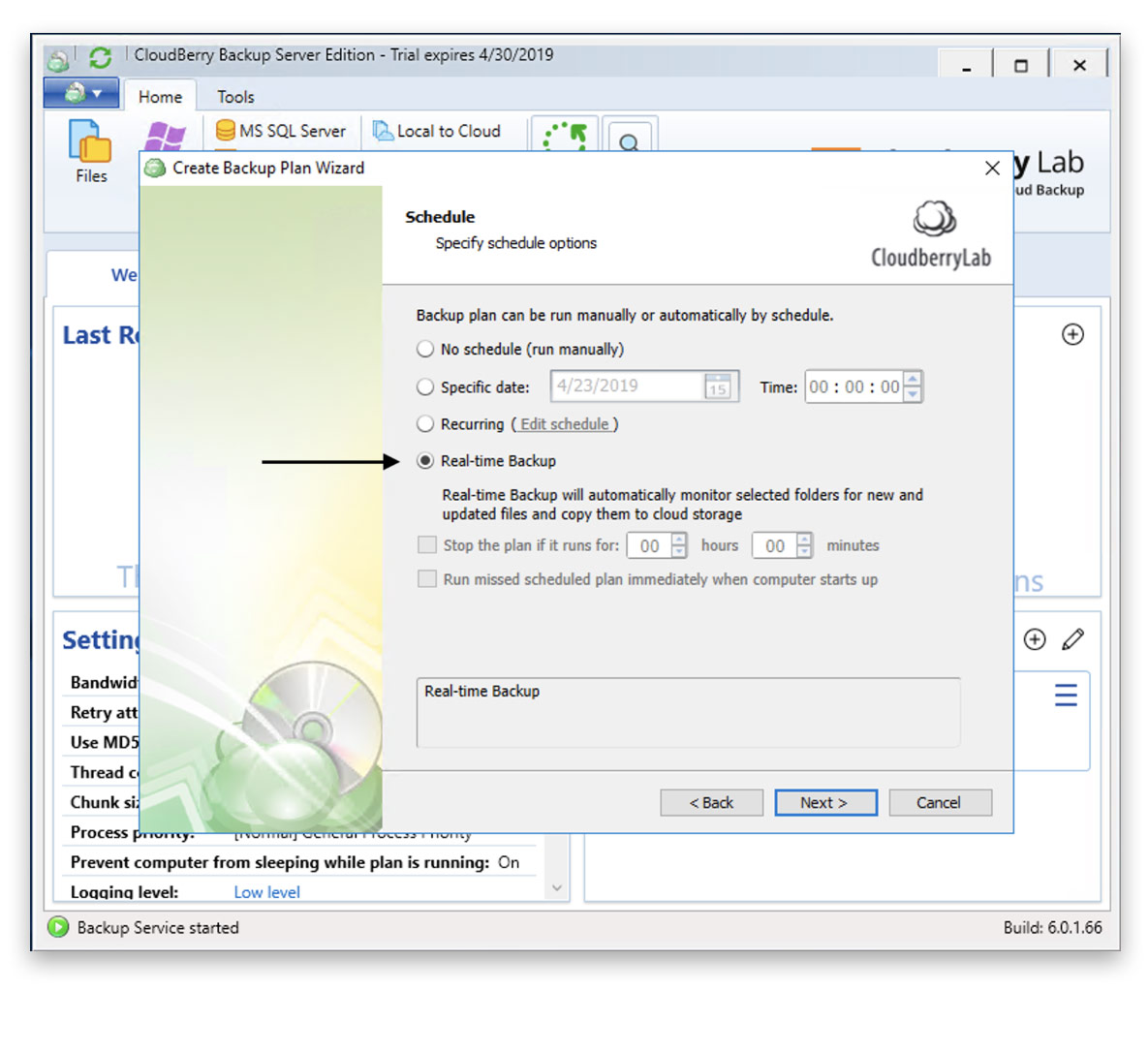


But what if you just want to back up individual files and folders? No problem. The "Bare Metal" backup option is cool when you need to perform block-level saves of entire local disk volumes. Managing CloudBerry backup plans Running a file backup ^ Once complete, you'll manage your backup plans on the (wait for it) Backup Plans tab in the product, as shown here: Whether you'd like an e-mail notification and/or Event Log entries written for this backup plan.Which commands, if any, you want to run automatically before or after the backup job runs or completes.Whether you want to do a one-time backup or set it on a schedule.Which retention policy you want to use: your choices are (a) application defaults or (b) custom retention policy for this backup plan.The encryption strength goes up to 256-bit AES Whether to enable compression and/or encryption.

Choose a backup type: choices are (a) image-based backup (b) bare metal recovery or (c) system state.Next, you'll make the following decisions to complete your first cloud backup plan: To connect CloudBerry to one of my Azure storage accounts, I simply provided: If you don't have a cloud storage account, then choose the File System option and point CloudBerry to a local or UNC network path. Choose a cloud storage account for use with CloudBerry Server Backup


 0 kommentar(er)
0 kommentar(er)
